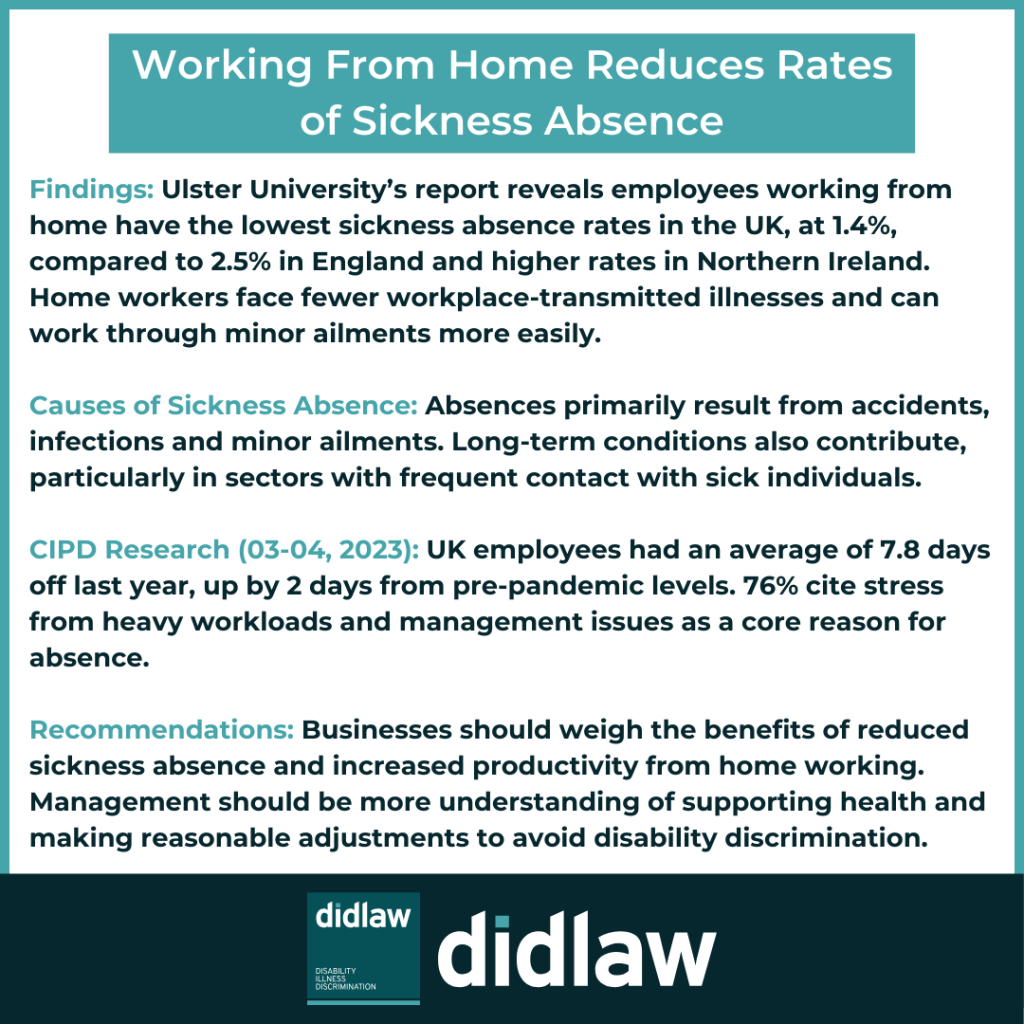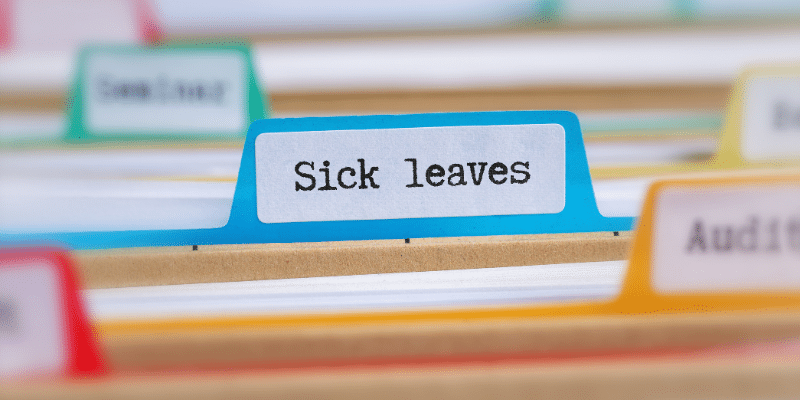
According to a report by Ulster University’s Economic Policy Centre, employees who are able to work at home have recorded the UK’s lowest sickness absence rates. The study undertaken compared absence rates across the UK with England having the lowest rate of 2.5% in 2022 and more workers in Northern Ireland calling in sick in 2022 than in any of the 8 previous years that the study had been going.
Perhaps not surprisingly the lowest absence rates in the UK, at 1.4% were among workers that are able to work from home. Obviously, this is because working from home you are shielded from many common ailments that are transmitted within the workplace and also, many people that work from home are less inclined to ‘call in sick’ but will work from home, whilst unwell. Often, if you take away the commute and the active requirement to be in the office, many people feel well enough to continue working.
The report highlighted that the top reasons for sickness absence were accidents, poisoning, infectious diseases and skin disorders. Other minor ailments such as coughs, colds and sickness were cited.
The increased rate of absence has been linked to many people having long-term health conditions which, amongst other things, ties in with an ageing population. Interestingly those working in health and social work had the highest rate of absence across the UK in 2022. Unsurprising given this is not work that can be done from home and requires coming into contact with people who are unwell and clinically vulnerable.
A discrete piece of research conducted by the CIPD in March-April 2023 found that UK employees were absent for 7.8 days on average in the past year which is two days more than the pre-pandemic sickness absence rate.
In the CIPD study stress was found to be a significant factor in both short-and long-term absence with more than 76% of those responding stating they had experienced stress-related absence in their workplace in the past year. Both heavy workloads and management style were found to be the most common causes of stress-related absence.
The report by Ulster University made several recommendations with one being the need to improve management knowledge of how to support employee’s health and wellbeing in the workplace. This concept of knowledge also works from a disability discrimination prevention perspective in that reasonable adjustments cannot effectively be made for an employee whose disability/health condition, is unknown to its employer.
Businesses that are advocating a wholescale return to office working may want to consider productivity and reduced sickness absence levels that arise from working from home.
This blog was written by Elizabeth McGlone, Partner at didlaw.
